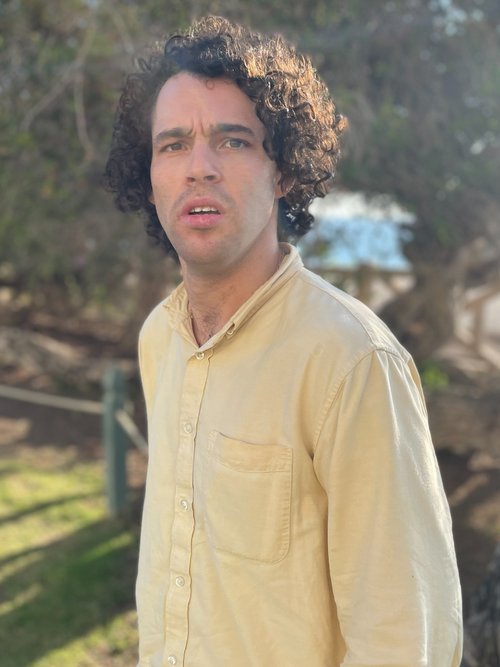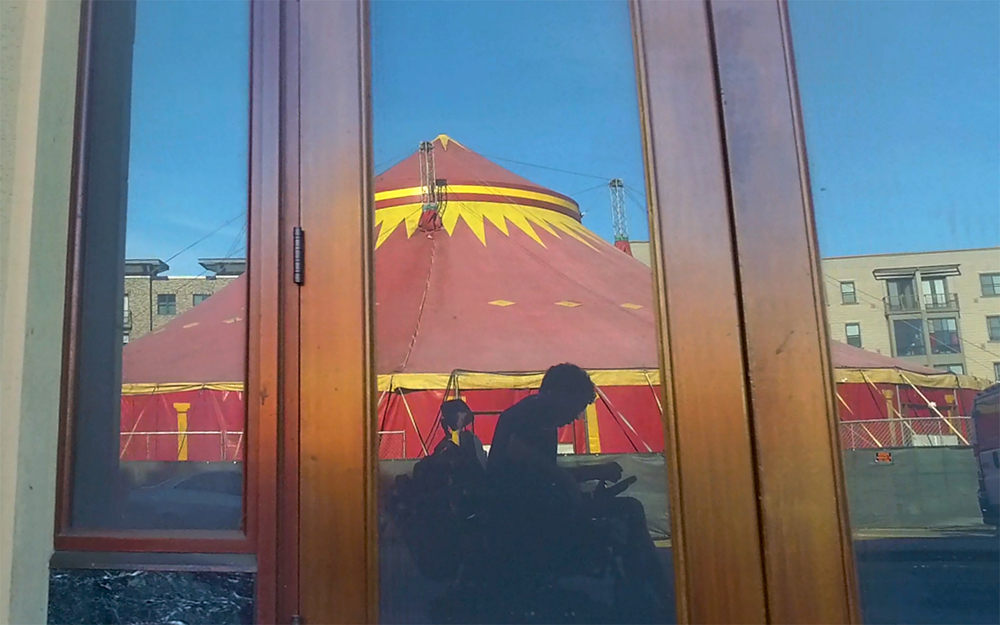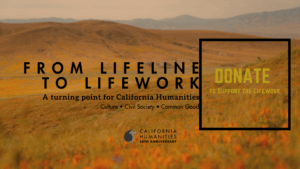Above image courtesy of Reid Davenport.
As a visibly disabled person, filmmaker Reid Davenport set out to make a film about how he sees the world, from either his wheelchair or his two feet, without having to be seen himself. The unexpected arrival of a circus tent outside his apartment in Oakland leads him to consider the history and legacy of PT Barnum’s Freak Show and its lingering presence in his daily life in the form of gawking, lack of access, and other forms of ableism. Personal and unflinching, I DIDN’T SEE YOU THERE forces the viewer to confront the spectacle and invisibility of disability.
I DIDN’T SEE YOU THERE premiered at the 2022 Sundance Film Festival, where it received the Directing Award for U.S. Documentary. Now, in advance of its national broadcast premiere on January 9, Director of Media & Journalism Programs John Lightfoot speaks with Director Reid Davenport about his goals for the film.
First, on behalf of California Humanities, congratulations on all the successes with the film—from the Sundance premiere to the upcoming broadcast, and all the dozens of screenings and audiences you’ve reached in between. For audiences who have not yet seen the film, what can they expect and what do you hope they take away from it?
I hope that they have an experience. I’m not sure if there is a specific message that I hope comes across. We have seen a broad range of interpretations and reactions, which is what we wanted.
Part of your goal was to explore questions of visibility and vision—being seen and seeing—as it relates to your disability. Can you elaborate on this goal and explain how it informed your approach to making the film?
One of the powers of art is excavating a collective subconscious; identifying something we all knew but didn’t necessarily have the words for. This duality between being seen and unseen has been explored before, but I wanted to frame it in my own way. The circus tent and PT Barnum were basically daring me to do so. I think many disabled people can relate to this duality, though it is not by any way exclusive to the disabled experience. There were multiple devices in play that speak to this dynamic that I hope viewers can pick up on.
You also talk about your hope that the film will be a springboard for discussions about Disability Aesthetics, e.g., how disability generates viewpoints, imagery, sounds, etc. that would not be realized otherwise. Are there specific examples you can share where the film has been effective in this regard?
Probably the most obvious one is the decision to shoot the film myself – from my body, from my wheelchair. My body moves involuntarily, which ostensibly disqualifies me from doing camera work. But the movements my body makes are rhythmic, informs how I see and am seen, and is a self-contained aesthetic. Disability aesthetics are about making art with the loose seams. In terms of attaching the camera to my wheelchair, I am showing people a beautiful world that they are afraid of and cannot access without a wheelchair. Because my speech is affected by my disability, the convention would be to subtitle the film. We didn’t. If audiences miss a word or a sentence or two, that’s part of the film. To be clear (HAHA!), the film is closed captioned for those who use captions.
Finally, what has been the most gratifying part of this experience so far and what do you hope is coming next?
Easy! It seems to be resonating with disabled people. We don’t see ourselves on screen in an authentic way very often. Judy Heumann, the mother of the Disability Rights Movement, said of the film, “I DIDN’T SEE YOU THERE’ is the first film that captures the way I hear my wheelchair and feel my body as we move through the world…The film made me, for the first time, get a view into my world and the world of so many others that is never discussed or considered.”
I hope many more disabled people see the film.
Is there anything else you would like to add?
It is an honor to have had California Humanities believe in this film from the early stages. I have a deep sense of gratitude.
I DIDN’T SEE YOU THERE airs nationally on the PBS series POV on January 9, 2023. Check your local listings for times in your area. Click here to watch the film’s trailer.
I DIDN’T SEE YOU THERE was supported by California Humanities through the California Documentary Project grant.







